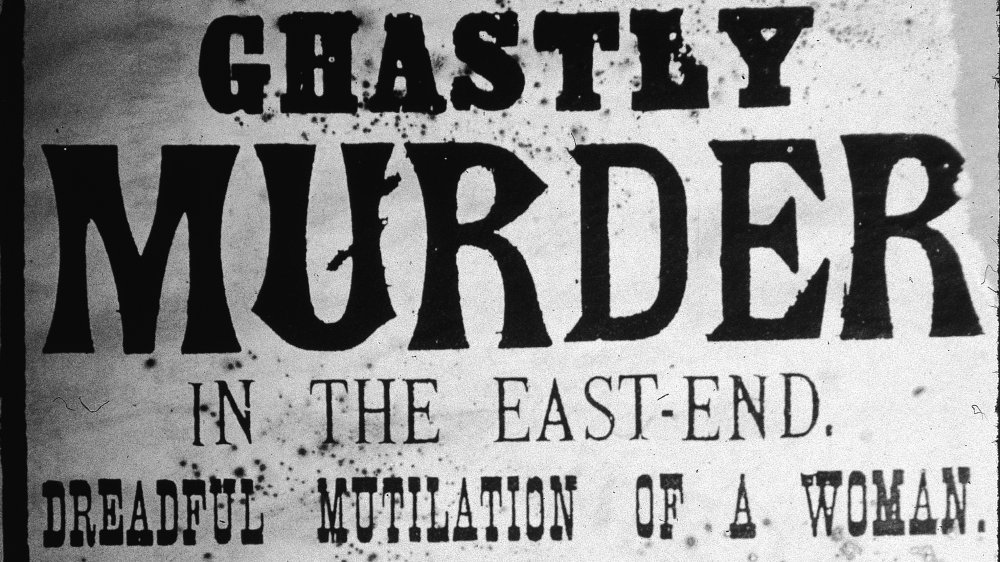Aaron Kosminski: How The Jack The Ripper Suspect Died
The early 2000s brought a cavalcade of polished, high-tech crime procedurals that still echo through popular culture today. The public was entertained week after week by shows like CSI, Law and Order: SVU, and, we're making some assumptions here, JAG, as they told stories about suspiciously symmetrical police detectives utilizing borderline sci fi technology to solve mysteries with the 45 minute efficiency of a P.F. Chang's delivery service.
With that concept of police acumen in murder investigations in mind, the Whitechapel Murders can seem extra jarring. The case seems, at first glance, to have everything that your standard Elliot Stabler or Ice-T would need to make an arrest. There was at least one witness, a pattern to the crimes, and enough forensic evidence pooling on the ground to ruin your fresh new Keds. But nearly 150 years later, the identity of Jack the Ripper remains a point of debate. Depending on who you ask, he (or she) could have been royalty, or a butcher, or a doctor, or, according to one particularly magical hypothesis outlined by the BBC, Alice in Wonderland author Lewis Carroll.
A prominent suspect with contemporary investigators is Aaron Kosminski, a deeply unstable Polish immigrant who moved to England in 1881. Could he have been Jack the Ripper? And how did the story of this suspicious character end?
Was Kosminski the Ripper?
According to Ripper website Whitechapel Jack, Kosminski was 23 when the murders took place, and he lived in close proximity to one of the murders generally attributed to Jack the Ripper. Many modern armchair investigators have pointed to Kosminski over the years, pointing out that his vocation as a hairdresser would have made him an expert with a blade, and that his disturbing behavior was, at the very least, heeby-jeeby inducing. DNA evidence left on a shawl found near one of the Ripper victims was analyzed in 2014 and 2019, and pointed to Aaron as a likely culprit
There are holes in the theory. Kosminski had a difficult time with the English language, making it unlikely that he would be able to lure victims in. The DNA analysis could be called circumstantial, as expert in the field Peter Gill has stated that "The shawl is of dubious origin and has been handled by several people who could have shared that mitochondrial DNA profile."
Kosminski was also, and this is a fun sentence, maybe too crazy to commit the crimes. By the end of his life, Kosminski was reportedly incapable of eating food that was handed to him due to severe paranoia, and would only consume scraps of trash that he found on the floor. He wound up committed to the Leavesden Asylum for the last 25 years of his life, where he died of gangrene, emaciated and alone, in 1919.

